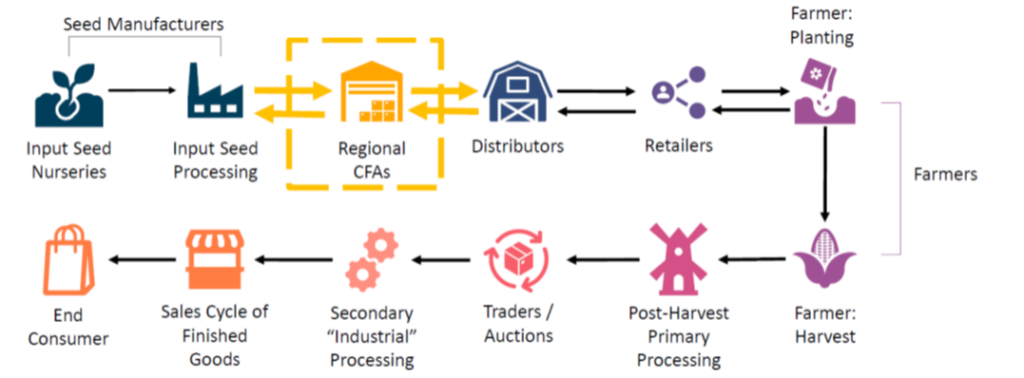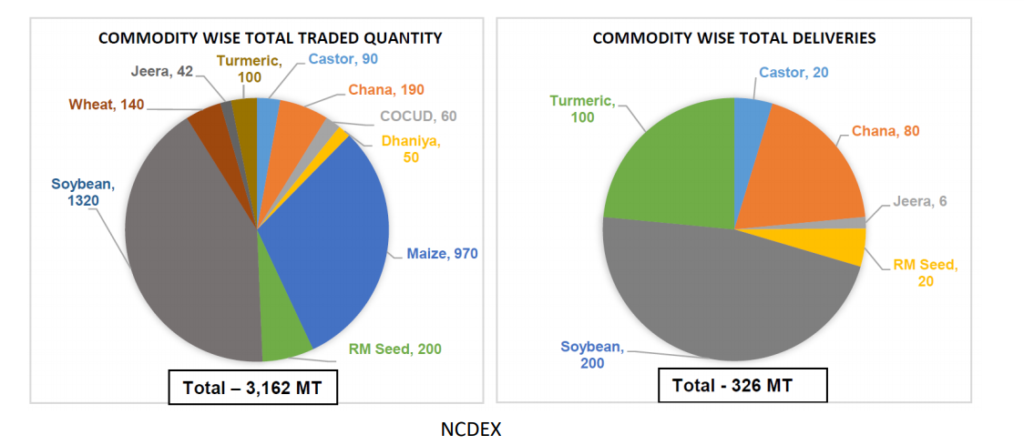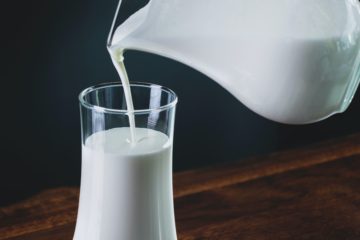When we talk about agriculture, one crucial thing about agriculture is that people generally do not talk much about is commodity markets. It is a esoteric subject and is not well known like say Stock markets.
Price Discovery in Commodity Markets
It is a marketplace where commodities are brought and sold. They discover the actual price that people must pay for a commodity and the price that they can expect after selling a commodity. In Economic terms this is called “Price Discovery”. But it is not an easy thing. Unless there are many buyers price discovery will not be accurate. If there is only one buyer, he decides the price and it becomes a Monopoly and price discovery falls flat. Similarly, there also has to be many sellers.
What is necessary for the commodity markets to work?
For the commodity market to work , the product should not be in short supply. Otherwise, the demand from the buyers will be more than the supply capacity of the suppliers. Similar is the case for oversupply. In a perfect market, if there is no short supply, no over supply, many buyers, many sellers, price discovery is easily achieved. When price discovery is easily achieved , it is useful for farmers who has to sell his produce. It is useful for the purchaser- consumer who has to consume the product. But when the price discovery fails, the farmer gets little, the consumer has to pay more and the differential gap is taken up by the middleman, who becomes fatter and fatter, richer and richer at the expense of the two crucial segments-Consumer and Farmer Producers. Commodity markets works well where there is good aggregators and Warehouses.
Why India produces lot of Rice and Wheat ?

The total food grain production is almost 300 million tones. Rice and wheat are the two largest commodities in India. There is a reason behind that. In 1960’s India had a short supply of these grains and hence imported them from America. India had to admit to the terms and conditions for help and some of them were very obnoxious like PL480.India was humiliated and it had to accept these terms little by little as it had to feed its public. This went on till Shastri became the Prime Minister. Shastri understood Agriculture, understood farmers, understood markets. India was already impoverished by 2 wars in 1962 and 1965 and needed something remarkable. Shastri realized that agriculture and Defense are very important sectors, one for external security and another one for internal security and thus famously coined the term “Jai Jawan, Jai Kisan”.Had not it been for Shastri, NDDB would have remained another government organization and nothing more. India would have missed the vision of Verghese Kurian where NDDB and the milk sector worked hand to hand to make India the world’s largest producer of Milk.
Need to Stop Import and Encourage Domestic Production
India faces a dilemma regarding whether it should encourage self production or import commodities from outside. Logically, India should have encouraged domestic production but the temptation to import is great because someone closer to ministry wants to make a lot of money by importing cheap and selling it in Indian market at higher price thereby destroying the price of the farmers, destroying domestic production and the only people who make money are the traders and his political friends. This has happened again and again and again.
MSP for Rice and wheat is causing problems to poor farmer
In India, there are two crops that are procured by the government. Rice and wheat are procured by the government. No other crops are procured by the Government. Government recommends an MSP. It expects at that price the traders to purchase and farmers to get their MSP. Let’s assume that the Government sets an MSP of Rs 100, but the trader says that I am going to pay only RS 50.There is nothing that Government and farmer can do. Unless and until, the crops are procured at MSP, setting an MSP does not hold any value. Since there are two crops in India where the government procured, there was a guarantee of procurement , the MSP went on increasing year after year and more and more farmers started growing rice and wheat. As India became self sufficient in wheat and rice, it is because the government protected Rice and Wheat. But there is the peculiarity about the government that when it tries to protect anything, it ends up doing more damage .This protection has lead to the weak losing out and the strong becoming stronger. This has lead to inefficiency and distortion.

If we look at the data carefully, the production of wheat was 167 million in 2004-05 tones and today we are 347 million tones in 2019-20.Similarly, the production of rice has risen from 246 to 426 from 2004-05 to 2019-20 in a matter of 15 years.
Inadequate Storage-:

If we are producing rice and wheat, we need to store it somewhere. If we look at the Storage capacity , we have 800 million tones of grain but we have only 63 million tones of storage. When we have only 20% of ware housing capacity, you are asking for trouble.
Government does not procure all Wheat and Rice that is produced
The Government talks about food security , buffer stock and encourages food production. The government agency Food corporation of India reaches to the market and purchases rice and wheat but it does not purchase all the rice and wheat, it does not purchase all the 800 tones it decides what the quota is, but does not tell what the quota is. At the right time, it says enough is enough , I cant take from you and stops the procurement. At this point of time the politically connected farmer have sold their crop to FCI. But not all the farmer manage to sell. When the Government stops procuring, the poor farmer finds that he has left 60 KG, 100Kg of rice, wheat and there are no buyers. He has nothing to do but sells it at a distress price at a much lower price. Despite the protection, the rich man wins and the poor farmer looses year after year after year.
Selling Grains through commodity exchange is a viable option rather than wasting
Now lets look at the second problem. We have an organization called WDRA(Warehousing Development Regulation Authority). The law was created for building warehouses on 2006. It was not enacted and pushed to self, everyone forgetting about it. In 2012-13 when the supreme court saw that a lot of grain is getting destroyed in the rain and the Sun. These were getting eaten by rats ,beetles outside the warehouses. The supreme Court was furious about these and said that whatever cannot be stored in warehouses should be given free of cost to the people. But if the rice and wheat is given free of cost to the people the market price will fall. The traders who own Go downs and warehouses will loose. Because of this the government did not allow free distribution of rice and wheat. Instead the Government allowed the rice and wheat to destroy.it is better that these grains get destroyed by nature rather than let the traders loose.
Role of WDRA
WDRA was created to stop the farmer from loosing because WDRA was created to build a warehouse all over the country so that it will be available to farmers within 50 KMs from their produce. The farmers can keep any small amount like 10kg,20 kg there. In addition to that there was supposed to be an auditor/assessor to check the quality of the grain as the farmer can sometimes be clever and sometimes add water to the grain, so that when you try to weigh it weighs a lot more .
Workings of E-NWR
Now the auditor looks at the quality, weight of the grain – weight of the excess water and looking at the chart decides this quality of grain should get this much amount of price. Thereafter the warehouses are supposed to give receipt to the farmer for X quality rice, B quality rice 10 kilos into so much price, total value so much. These receipts were supposed to be dematerialized then the farmer can take the piece of paper and go to the bank and get it checked whether it is in the database or not so that it is not a bogus receipt. The Bank knew the price of the crop and the price of the commodity changes hour by hour and the WDRA has its crop in its custody so everyone knew that the crop was there. The bank could see the latest price and say to the farmer that Mr. Farmer this is the latest price and I could give you the latest price right now. If the farmer said yes, the Bank could pay the money immediately and the farmer can take back the money and can go home immediately. Now if the farmer does not want to sell now and lets say wants to keep it for six months then a nominal amount for six months of warehousing will be charged. This amount will be subtracted from the total monetary value. The Bank then puts an order to sell this produce in commodity exchange. This was the theory at least how the small farmer will get benefited but it has not been implemented successfully.
Very few WDRA approved warehouses
Right from 2012 till today, WDRA only has 9.5 Millions tones Storage compared to 63 million total storage. Either the WDRA is not doing its job properly or is not being allowed to do its job properly. Something is wrong. What can be the possible reasons for not having proper storage even today?
Potential Solutions
FCI should purchase from Commodity Exchange
One reason why the WDRA could not succeed because the govt. continued buying rice and wheat from the farmers. Logically, if there is a commodity exchange , if there is a WDRA warehouse, the FCI should be purchasing from commodity exchange so that FCI allows discovery of price. But because the FCI did not purchase from the commodity markets , the FCI had its own price, the commodity markets had its own price. There was an administrative price, there was an market price and sometimes both of them were not the same.
FCI need to end favoritism
There is also a second reason why FCI did not purchase from the commodity markets. If the FCI purchases from the commodity markets, it cannot favor the politically connected and powerful farmer. Suppose FCI purchases from the Commodity markets then any farmer could have gone and sold their produce. This would have reduced favoritism.
Inbuilt Temptation to destroy crops
Thirdly Another reason for this not being implemented is warehouse capacity of WRDA. We have 62 million tones of warehousing capacity. Assuming we add another 62 million tones of WDRA it becomes approx. 120 Million tones. We have 800 Million tone grain production. What the FCI is suspected to be doing is that from favorite farmers it buys second grade grain at A-Grade prices and the price differential is shared by all the parties concerned. Logically this cannot happen as the grains will be checked by the auditor after looking at the quality. But precisely to not to allow the auditors to determine the quality of Grain, the FCI allows the grains to get destroyed by itself. There is an inbuilt temptation to allow the grains to get destroyed by itself and the proof of corrupti0n is destroyed.
Need to Transfer all Godowns to WDRA
Finally, the Government should have transferred all the FCI godowns to the WDRA. When the FCI purchases , it can purchase from commodity markets through the warehouses and can distribute it through the public distribution systems, the ration shops. So the FCI will purchase only that much of grain that the ration shops require. The rest can remain in storage houses that are safe, that are WDRA approved and that which could give dematerialized receipts. The Government did not allow the transfer of FCI godowns to WDRA.
Need for aggregators-:
Ideally in every state there should be 1 or 2 big FPO’s which should be a super aggregretor. Let’s say there are 50 FPO’s , who take the grain collections from 100,200 and 500 farmers in their collection area. They collect the grain and give it to the super FPO, where the gains are stored in a proper warehouse, properly accounted for and then the right grade of grain is sold at the right price.
Pricing Inputs-:
We need to avoid doles and subsidies and need to start pricing inputs such as water. There are certain water guzzling crops that are distorting agriculture markets in the country. If we price water people will grow crops that consume les water. And the crops that they grow has to be consumerate with the amount of water they have used.
Terrible Return for Farmers from Cultivation-:

Farmer makes very little money from cultivation. He earns more money by working as a laborer. Because of this reason farmers are leaving agriculture and moving more and more into labor. Farmers are moving to cities for work and are leaving behind not so bright relative behind to look for agriculture. These relatives are dull and not so versed with technology and hence the agriculture output and the yield from a land decreases.
The elusive WDRA
The Warehousing (Development and Regulation) Act (or WDRA) was tabled in 2007 .The WDRA) constituted on 26.10.2010 vide Government of India Gazette Notification dated 26th October 2010. It is a Statutory Authority under the Department of Food and Public Distribution . WDRA provides for the development and regulation of warehouses, negotiability of warehouse receipts and promote orderly growth of the warehousing business in the country. The mission of the Authority is to establish a Negotiable Warehouse Receipt (NWR) .On 10 July, 2020, it finally posts cumulative capacity at 9.5 million tones
The agri-food supply chain

We have the Input seed nursery, where the seed is processed , cleaned then it goes to regional CFAs where CFA is the clearing and forwarding Agent. From there it goes to retailers, the retail seed sellers, from there it goes to farmers for planting. After harvest, it goes for primary processing where the husk is removed from the grain. We only take out the grain that is required and then it goes to the traders and auctioned off .This is where the commodity markets comes in. After this there is a secondary Industry processing , where a particular grade of grain is put into a mill and have wheat flour coming out, rice flour coming out. We can have different kinds of grain , or different types of grain coming in, so we have both the bajra and wheat mixed so that we can create a combination of bajra and gehu, of wheat and maize. Then finally we have sales cycle of finished goods and finally it goes to consumer.
Benefits of eNWR
Avoidance of Forgery/loss/tampering of warehouse receipts. • Avoidance of multiple financing against the same warehouse receipt. Reduction of monitoring costs and building credibility amongst market participants . Market participants to have secured accessibility to view and manage their warehouse receipts via online portal. Easy access to finance by enabling multiple transfers without physical movements of goods. Splitting of NWRs for partial sale/pledge/withdrawal.
FPOs could be the way forward

FPO’s could be the way forward.50,60 100 farmers can come together and form an FPO.FPO collects the produce and allows you to negotiate for bulk sales instead of having distress sales in small quantities.
Proof of reassurance – NCDEX

The No. of FPO’s continues to go up but the quantity traded goes down. Is the FPO not trusted anymore? Does the FPO not sell in commodity exchange ?Has the FPO lost faith in the commodity exchange ? Not exactly , but because now the farmer is part of FPO sells through FPO, if it sees the price at commodity exchange to be Rs 100 and the price paid by the trader is Rs 50.It tells I cannot sell the commodity to the trader. But when the trader requests repeatedly, pleads and begs as it has to remain in business and still on insistence when the FPO does not agree the trader is forced to increase the price from 50 to 97, and FPO finds it viable and profitable subtracting the transport cost, it sells to the trader.
But because of the commodity exchange the local trader is forced to pay a higher price and the farmer can decide when to pay through local exchange and when through trader. And the volume of trading has decreased because the trader has paid more than the commodity exchange. The trader then keeps it over months and releases it slowly, slowly when the market prices rises. This is not inefficiency bit it is a drastic turnover where the power is transferred from trader to the farmer.
Confidence building – NCDEX

NCDEX – Snapshot
- States covered — 13
- Commodities traded — 17
- FPOs Traded on the NCDEX platform — 98
- Traded Quantity MT — 2,33,686
- Farmers represented by trading FPOs — 59,678
- Farmers registered for Price dissemination (SMS Service)
Every farmer gets an SMS. For example today we sold rice at this price. Tomorrow we are going to sell 50,000 kilos of rice. SMS service tells the farmer which commodity exchange to go to. Will this mandi give me a better price or that mandi gives me a better price.
They’s life beyond wheat and rice

Rice and wheat are very important but if we look at other grains that are sold and we could see above there is increase in market share of soybean.
This is because of the two reasons, the price of maize is less than the price of rice and wheat. If I am poor, I will take jawar, Bajra. I won’t take rice and wheat which is more expensive for my family. There is a market for jawar and Bajra also.
Secondly , bajra ,jawar, millets, ragi are high in nutritional quality than rice and wheat. So many families have started taking these crops which have more nutrition in them.
Thirdly, the crop which is very valuable and has resulted in increase in market share is oil seeds. Soyabean is increasing because of two reasons. It can be sold as soybean. The remaining part is sold as l as feed for cattle for animals.Basically, whatever has left after the oil is taken out is given back to cattle as feed because it is very nutritional



0 Comments